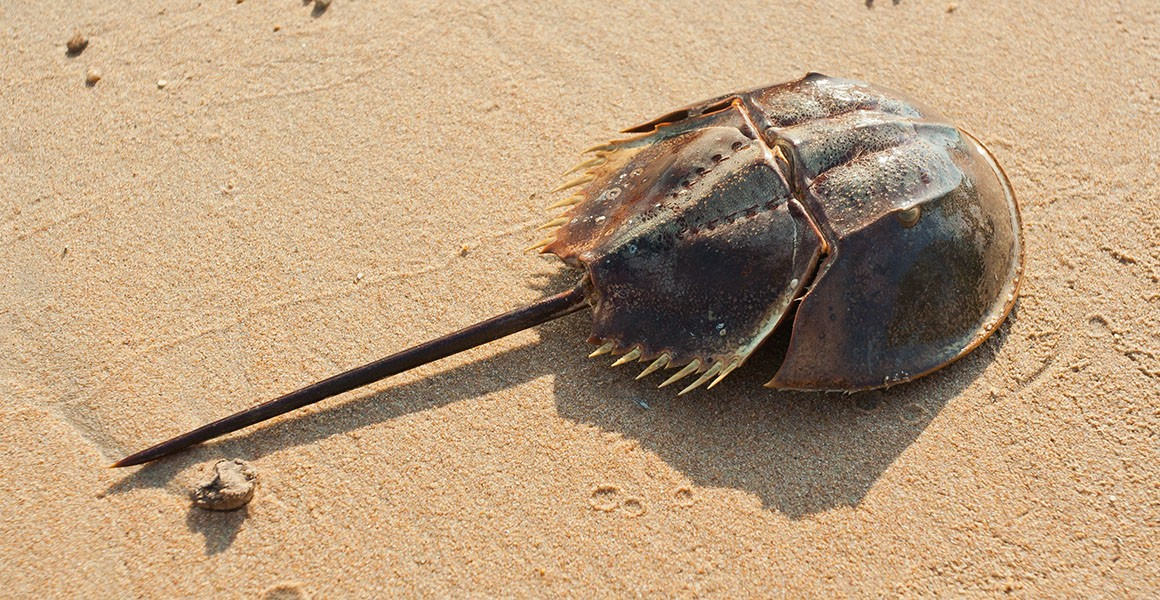Important Facts For Prelims
Horseshoe Crabs
- 27 Aug 2024
- 4 min read
Why in News?
Recently, the Zoological Survey of India (ZSI) and Odisha Forest Department have started the exercise to tag Horseshoe Crabs to conserve this ancient species.
- ZSI planned to tag hundreds of crabs to determine their population pattern and threats to them.
What are the Key Facts About Horseshoe Crabs?
- About:
- Horseshoe crabs are marine and brackish water arthropods of the family Limulidae and the only living members of the order Xiphosura.
- These are one of the oldest living creatures on Earth (emerged 250 million years ago), also called living fossils.
- Species and Location: There are 4 existing species of horseshoe crabs.
- India has 2 species of horseshoe crabs: Tachypleus Gigas (found in Odisha and West Bengal) and Carcinoscorpius rotundicauda (found in Sundarbans mangroves of West Bengal).
- American horseshoe crab (Limulus polyphemus): Found along the eastern coast of the USA and in the Gulf of Mexico.
- Tri-spine horseshoe crab (Tachypleus Tridentatus): Found in the Indo-Pacific region.
- Threat:
- Destructive fishing practices and illegal smuggling.
- Conservation Status:
- Wildlife Protection Act (WPA), 1972: Indian species are protected under Schedule II of WPA 1972.
- IUCN Status:
- American horseshoe crab: Vulnerable.
- Tri-spine horseshoe crab: Endangered.
- The two other species are not listed yet.
- Medicinal Uses:
- Its carapace (hard upper shell) is applied onto scars.
- Horseshoe crab blood is bright blue and contains immune cells that are sensitive to toxic bacteria.
- These cells clot around invading bacteria, protecting the horseshoe crab's body.
- Scientists used these cells to develop a test called Limulus Amebocyte Lysate (LAL), which checks new vaccines for contamination, preventing the distribution of vaccines with harmful bacteria.
- International Horseshoe Crab Day is celebrated on 20th June every year to showcase the collective conservation efforts for horseshoe crabs.
Living Fossils
- Living fossils are species that have survived for millions of years, maintaining the same traits as their ancient ancestors.
- These organisms provide invaluable insights into Earth's evolutionary history and ancient ecological landscapes.
- Other Examples of Living Fossils:
- Coelacanth: Rediscovered in 1938 off the coast of South Africa, this deep-sea fish is notable for its lobed fins, which function similarly to limbs.
- Ginkgo Biloba: The sole surviving member of an ancient group of plants, it has distinctive fan-shaped leaves that have remained unchanged for millions of years.
- Wollemi Pine: A rare plant discovered in 1994 in Australia, known for its ancient lineage.
- Tuatara: A reptilian species unique to New Zealand, representing a link to ancient reptiles.
UPSC Civil Services Examination, Previous Year Questions (PYQs)
Prelims
Q. Recently, our scientists have discovered a new and distinct species of banana plant which attains a height of about 11 meters and has orange coloured fruit pulp. In which part of India has it been discovered? (2016)
(a) Andaman Islands
(b) Anaimalai Forests
(c) Maikala Hills
(d) Tropical rain forests of northeast
Ans: (a)
Q. Biodiversity forms the basis for human existence in the following ways: (2011)
- Soil formation
- Prevention of soil erosion
- Recycling of waste
- Pollination of crops
Select the correct answer using the codes given below:
(a) 1, 2 and 3 only
(b) 2, 3 and 4 only
(c) 1 and 4 only
(d) 1, 2, 3 and 4
Ans: (d)







